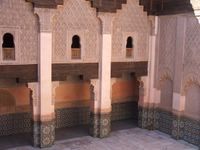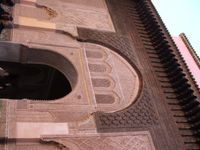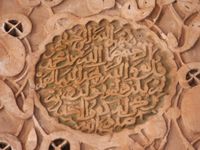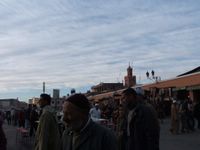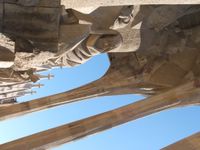Monday, February 28, 2005

Of all tile work, this is the harest to do. Glazed teracotta tiles are carved like lino cuttings so that the glaze is left only in a few places, in delicate patterns. This tilework is so diffcult to acheive because it is easy to slip and one mistake ruins the entire tile. One level of the walls of the main square of the Medersa were covered in these kind of tiles.
A Few More Pics from Barcelona
A few photos from Barcelona that didn't quite make it into the last lot.
posted by Becky in Seville

